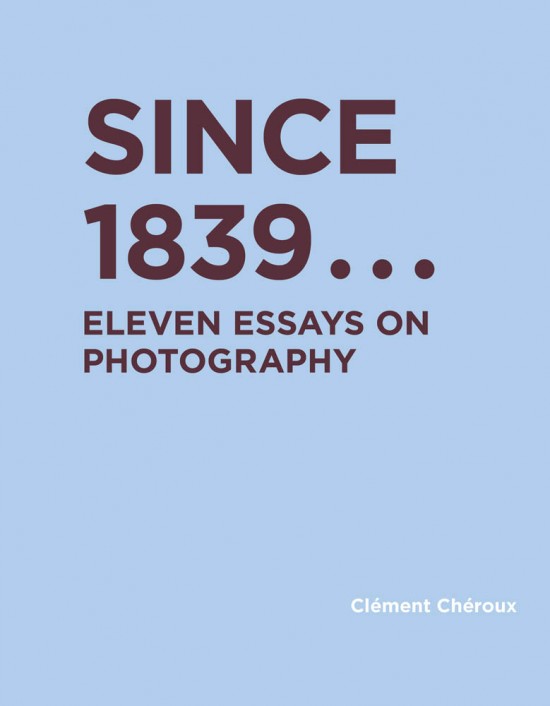Copublished with The Image Centre in Toronto, IMC Books celebrates its sixth publication with Facing Black Star
The IMC Books series—copublished by the MIT Press and The Image Centre at Toronto Metropolitan University—reaches a milestone this spring with the publication of its sixth book, Facing Black Star (available June 2023 from the MIT Press).
The series, launched in 2016 and edited by TMU Associate Professor and The Image Centre Head of Research Thierry Gervais, is dedicated to scholarly research on the history and theory of photography. The books appeal to academics of visual history and photography enthusiasts alike.
The latest book in the series explores TMU’s Black Star Collection, a collection of hundreds of thousands of black-and-white photographs recently acquired by the university. Alongside the 100 images featured in the book, Facing Black Star investigates photography theory and history, the role of photographic archives, and the photograph as a medium.
Read more volumes in the IMC Books series below, and discover more books on photography from the MIT Press.

Facing Black Star edited by Thierry Gervais and Vincent Lavoie
In 2005, Toronto Metropolitan University (TMU) acquired the massive Black Star Collection from the photo agency previously based in New York City—nearly 292,000 black-and-white prints. While the move of the collection from a corporate photo agency to a public cultural institution enables more access, researchers must still face the size of the collection, its structural organization, the materiality of the prints, and the lack of ephemera. Facing Black Star aims to fruitfully highlight this tension between research expectations and challenges. Shedding new light on current issues in the theory and history of photography, this impressive volume containing 100 images not only discusses the subjects portrayed in the photographs but also addresses the history of photojournalism, the role of such a photographic archive in our Western societies, and, ultimately, photography as a medium.

Since 1839… Eleven Essays on Photography by Clément Chéroux
Since 1839… offers a selection of essays by the renowned photography historian Clément Chéroux. Appointed Joel and Anne Ehrenkranz Chief Curator of Photography at the Museum of Modern Art (MoMA) in New York in 2020, Chéroux takes on a variety of topics, from the history of vernacular photography to the influence of documentary photography on Surrealism. These texts, newly translated into English and published together in one volume for the first time, reflect the breadth of Chéroux’s thinking, the rigor of his approach, and his endless curiosity about photographs.

Documentary in Dispute: The Original Manuscript of Changing New York by Berenice Abbott and Elizabeth McCausland by Sarah M. Miller
The 1939 book Changing New York by Berenice Abbott, with text by Elizabeth McCausland, is a landmark of American documentary photography and the career-defining publication by one of modernism’s most prominent photographers. Yet no one has ever seen the book that Abbott and McCausland actually planned and wrote. In this book, art historian Sarah M. Miller recreates Abbott and McCausland’s original manuscript for Changing New York by sequencing Abbott’s one hundred photographs with McCausland’s astonishing caption texts. This reconstruction is accompanied by a selection of archival documents that illuminate how the project was developed, and how the original publisher drastically altered it.

The Birth of the Idea of Photography by François Brunet
This influential text by French historian and theorist François Brunet considers the invention and history of photography as the birth of an idea, rather than a new type of image. This “idea photography” combines a logical theme—that of an art without artistry—and the democratic political promise of an art for all. Brunet shows how emerging image technologies and practices in France and Britain were linked to this logical/political construction of photography. The parallel development of the Kodak camera and Alfred Stieglitz’s “straight” vision in the United States then fulfilled, while also depreciating, the utopian promise of photography for all. This history reached a provisional climax with the reflections on images by Ralph Waldo Emerson, Hippolyte Adolphe Taine, Sigmund Freud, Henri-Louis Bergson, and Charles Sanders Peirce, reflections that both demonstrated the novelty of photography and forecast many later debates on its technology and aesthetics.

The Eye of History: When Images Take Positions by Georges Didi-Huberman
From 1938 to 1955, Bertolt Brecht created montages of images and text, filling his working journal (Arbeitsjournal) and his idiosyncratic atlas of images, War Primer, with war photographs clipped from magazines and adding his own epigrammatic commentary. In this book, Georges Didi-Huberman explores the interaction of politics and aesthetics in these creations, explaining how they became the means for Brecht, a wandering poet in exile, to “take a position” about the Nazi war in Europe. Illustrated with pages from the Arbeitsjournal and War Primer and contextual images including Raoul Hausmann’s poem-posters and Walter Benjamin’s drawings, The Eye of History offers a new view of important but little-known works by Brecht.

The “Public” Life of Photographs by Thierry Gervais
Do we understand a photograph differently if we encounter it in a newspaper rather than a book? In a photo album as opposed to framed on a museum wall? The “Public” Life of Photographs explores how the various ways that photographs have been made available to the public have influenced their reception. The reproducibility of photography has been the necessary tool in the creation of a mass visual culture. This generously illustrated book explores historical instances of the “public” life of photographic images—tracing the steps from the creation of photographs to their reception.


